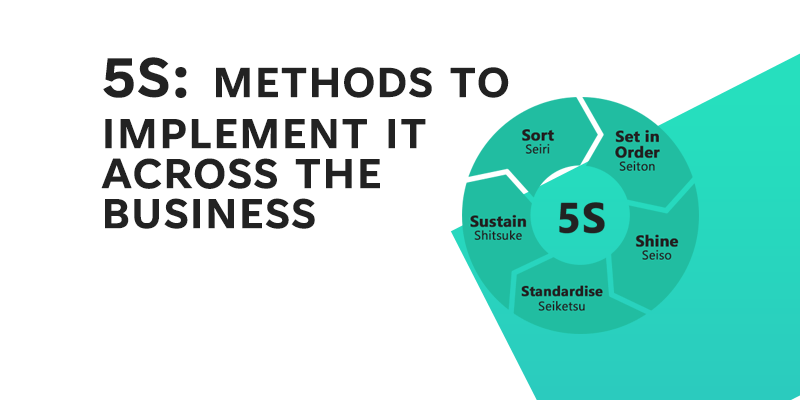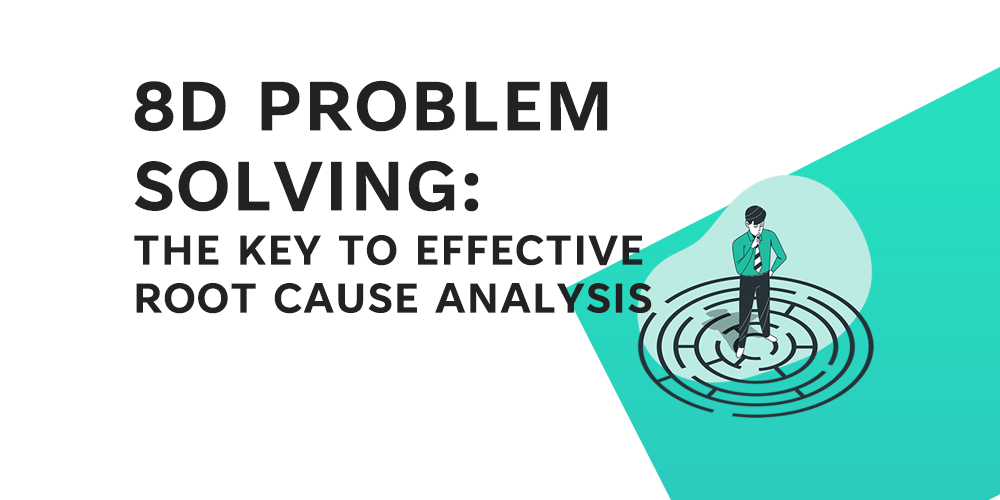Going on a Lean Six Sigma journey is an invigorating experience filled with opportunities for improvement and organizational excellence. However, the cornerstone of this journey is the selection of the right projects that not only generate tangible benefits but also align with your overarching business goals. A meticulously chosen project can drive productivity, reduce costs, and elevate customer satisfaction, creating a ripple effect of positive change throughout your organization.
On the flip side, an ill-selected project can consume valuable resources with little to no return on investment, leading to skepticism and resistance towards future Lean Six Sigma initiatives. Therefore, choosing the right project is not merely a task but a strategic decision that requires a thoughtful, systematic approach. This guide aims to provide you with a comprehensive framework to select Lean Six Sigma projects that are both impactful and aligned with your organizational objectives.
Step 1: Understanding Organizational Objectives
Why It Matters
In Lean Six Sigma, understanding your organizational objectives serves as the compass that guides your journey towards continuous improvement. Without a clear understanding of what you are aiming to achieve, it’s easy to get lost in a myriad of projects that may appear beneficial but don’t necessarily drive your organization toward its strategic goals. Whether your focus is on enhancing customer satisfaction, reducing operational costs, or increasing product quality, aligning projects with organizational objectives is a pivotal first step.
The Alignment Factor
Imagine embarking on a project aimed at speeding up a specific manufacturing process, only to later discover that the organizational goal was actually to improve product quality. The effort, time, and resources invested in this project would then not contribute meaningfully to the organization’s primary objectives. This mismatch could have been avoided by simply aligning the project with the organizational goals from the outset.
Action Steps
1. Meet with Top Management to Understand Strategic Goals
- Purpose: The senior leadership team has a bird’s-eye view of the organization and understands its long-term goals and strategies.
- How to Execute: Schedule a meeting or workshop with key decision-makers to discuss the organization’s strategic objectives.
- What to Ask:
- What are our core business objectives for the next 1-5 years?
- Are there any specific KPIs we are aiming to improve?
- Is there a focus on any particular market, customer segment, or product line?
2. Document These Objectives for Team Visibility
- Purpose: Making strategic objectives visible to the team ensures that everyone is on the same page and prevents misalignment.
- How to Execute: Create a document or use project management software to list down the organizational objectives derived from the meeting.
- What to Include:
- The objectives themselves
- Corresponding KPIs
- The time frame for achieving these objectives
- Any other relevant context or explanation
Step 2: Identify Potential Projects
Why It Matters
Having established a clear understanding of your organizational objectives, the next logical step is to identify potential Lean Six Sigma projects that align with those goals. Identifying the right projects is crucial because it ensures that your efforts will be channelled into areas that will have the most impact. Your focus should be on processes that are inefficient, costly, time-consuming, or error-prone, as improving these areas can yield significant benefits.
The Four Key Areas
- Inefficient Processes: Processes that have too many steps, redundant activities, or bottlenecks.
- Costly Operations: Areas where the organization is spending more than it should, be it in terms of money, resources, or materials.
- Time-consuming Activities: Processes that take longer to complete than they should, thus delaying other dependent activities and creating inefficiencies across the system.
- Error-prone Tasks: Operations that often result in mistakes, requiring rework and thereby consuming additional time and resources.
Action Steps
1. Conduct a Process Mapping Exercise

- Purpose: A process map visually represents the sequence of activities involved in a process, helping you identify inefficiencies, bottlenecks, or error-prone steps.
- How to Execute:
- Assemble a cross-functional team that understands the process.
- Map out the current state of the process, including inputs, activities, and outputs.
- Highlight areas where inefficiencies, delays, or errors are occurring.
2. Gather Data from Various Departments
- Purpose: Collecting data from different departments provides a multi-faceted view of the processes in question, allowing you to identify which areas are most in need of improvement.
- How to Execute:
- Define what metrics or data points are needed to assess the inefficiency, cost, time, or error rate of potential projects.
- Use tools like surveys, observations, or existing data repositories to gather this data.
Step 3: Evaluating Project Scope
Why It Matters
Even the most promising projects can fail if their scope isn’t thoroughly evaluated and managed. A project that is too large or complex can become unmanageable, leading to delays, cost overruns, and ultimately, failure to achieve the desired objectives. Conversely, a project that is too small may not bring enough value or impact to justify the investment of time and resources. Thus, evaluating the project scope is a critical step in ensuring that your Lean Six Sigma initiative is both feasible and impactful.
The Scope Spectrum
Projects can range from simple, quick wins to complex, long-term initiatives. Understanding where a potential project falls on this spectrum is essential for setting realistic expectations and planning effectively. Here are some questions to ask:
- What is the breadth of the process or area we are looking to improve?
- How many departments or teams will be involved?
- What is the estimated duration of the project?
- Are there any external factors that could affect the project scope?

Action Steps
1. Break Down Larger Projects into Smaller, Manageable Phases
- Purpose: Decomposing a large project into smaller parts makes it easier to manage, allows for quicker wins, and reduces the risks associated with failure.
- How to Execute:
- Identify the key components or stages of the project.
- Prioritize these based on their alignment with organizational objectives, potential impact, and feasibility.
- Create a phased plan, detailing what will be accomplished in each phase.

2. Consider Time, Cost, and Resource Constraints
- Purpose: Every project is constrained by the “Project Management Triangle” of time, cost, and resources. Understanding these constraints is key to setting realistic scope and expectations.
- How to Execute:
- Time: Estimate how long each phase or task will take and whether it aligns with organizational timelines.
- Cost: Calculate the financial investment required for each phase, including manpower, materials, and other resources.
- Resources: Assess the availability and skill level of team members and other resources like software, equipment, and workspace.

Step 4: Financial Considerations
Why It Matters
The financial aspect of a Lean Six Sigma project cannot be overstated. While the ultimate goal is to bring about improvements, it’s crucial that these improvements translate into measurable financial gains for the organization. A project that doesn’t justify its financial feasibility risks not only wasting valuable resources but also eroding stakeholder confidence in continuous improvement initiatives. Therefore, using financial metrics like Return on Investment (ROI), Net Present Value (NPV), and payback period is essential for evaluating and prioritizing projects.
Key Financial Metrics
- Return on Investment (ROI): Measures the profitability of the project. A higher ROI means that the project will yield more financial benefits compared to the costs.
- Net Present Value (NPV): Calculates the present value of future cash flows, adjusted for the time value of money. A positive NPV indicates that the project will generate more revenue than it costs.
- Payback Period: Determines the time it will take for the project to repay its initial investment. A shorter payback period is generally preferable, as it means the organization will recoup its investment sooner.
Action Steps
1. Calculate the Estimated ROI for Each Project
- Purpose: To provide a quantifiable measure of the project’s profitability.
- How to Execute:
- Estimate the financial benefits that the project is expected to bring. This could include cost savings, increased revenue, or other financial gains.Calculate the estimated costs involved in executing the project.Use the formula:
[latex]
\text{ROI} = \left( \frac{\text{Estimated Benefits} – \text{Estimated Costs}}{\text{Estimated Costs}} \right) \times 100[/latex]
2. Prioritize Projects with Quicker Payback Periods
- Purpose: To focus on projects that will provide quicker financial returns, thereby freeing up resources for other initiatives.
- How to Execute:
- Calculate the payback period for each project by dividing the estimated initial investment by the expected monthly or yearly financial benefits.
- Prioritize projects with shorter payback periods, as they are less risky and provide quicker returns.
Step 5: Assessing Skills and Resources
Why It Matters
No project, no matter how well-planned or financially promising, can succeed without the right skills and resources. Human capital, in the form of team skills and expertise, is often the most critical resource in Lean Six Sigma projects. Similarly, tangible resources like software, equipment, and workspace can also play a significant role in the project’s outcome. Therefore, assessing the availability and constraints of these resources is an integral part of project selection.
Skill Sets and Expertise
Understanding the skills required for a project is crucial. Skills can range from technical proficiencies, such as data analysis or process engineering, to soft skills like team leadership and communication. Knowing what skills are needed allows you to ensure that your team is equipped to handle the challenges of the project.
Action Steps
1. Create a Skills Inventory
- Purpose: To identify the skill sets available within the organization and pinpoint any gaps that need to be filled.
- How to Execute:
- List down all the key skills required for the project.
- Match these against the skills already available within your team or organization.
- Identify gaps where additional training or hiring may be needed.
2. Assess Resource Availability and Constraints
- Purpose: To ensure that all necessary resources, including human resources, materials, and equipment, are available for the project.
- How to Execute:
- Take stock of the tangible resources that will be required, such as software tools, equipment, or physical space.
- Assess the availability of these resources, keeping in mind that other projects or operational activities may also require them.
- Also, consider time as a resource. Make sure that team members have the bandwidth to dedicate to the project.
Step 6: Stakeholder Analysis
Why It Matters
Stakeholders can make or break a Lean Six Sigma project. Their influence, interests, and attitudes toward the project can significantly affect its progress and outcome. Understanding who these stakeholders are, how they will be impacted, and what their likely stance will be, is crucial for garnering support, managing risks, and ultimately ensuring the project’s success.
The Importance of Perspectives
The views and concerns of stakeholders are often diverse, reflecting their different roles, responsibilities, and stakes in the project. For example, while a department head may be concerned about how the project impacts their KPIs, an end-user may be more interested in how it affects their day-to-day work. Capturing these varied perspectives can provide valuable insights into potential risks and opportunities.
Action Steps
1. Identify Internal and External Stakeholders
- Purpose: To understand who will be impacted by the project and who has influence over it.
- How to Execute:
- Create a list of all individuals, teams, or organizations that have a stake in the project.
- Classify them as internal (e.g., team members, managers) or external (e.g., customers, suppliers).
2. Conduct a SWOT Analysis for Stakeholder Perspectives
- Purpose: To analyze the Strengths, Weaknesses, Opportunities, and Threats related to stakeholder involvement and perspectives.
- How to Execute:
- For each identified stakeholder or stakeholder group, conduct a SWOT analysis considering their perspective.
- Strengths: What positive impacts or support can this stakeholder bring to the project?
- Weaknesses: What limitations or challenges could this stakeholder pose?
- Opportunities: Are there potential benefits or advantages that could be leveraged through this stakeholder?
- Threats: Could this stakeholder pose risks to the project, such as resistance or non-cooperation?
Step 7: Prioritizing Projects
Why It Matters
You’ve identified potential projects, assessed their scope, scrutinized financial considerations, inventoried skills and resources, and conducted stakeholder analysis. Now, it’s time to make the tough decision: Which projects should you prioritize? The prioritization process is a critical junction where data and strategy converge to guide your Lean Six Sigma journey. Using a systematic approach like a weighted scoring model can help you make an objective and informed decision.
The Weighted Scoring Model
A weighted scoring model helps in objectively comparing and ranking different projects based on multiple criteria. Each criterion is assigned a weight to reflect its importance in the decision-making process. Projects are then scored against these criteria, and the scores are multiplied by the respective weights. The resulting weighted scores are summed to give an overall score for each project, which can be used for ranking.
Action Steps
1. Assign Weights to Selection Criteria
- Purpose: To quantify the importance of each selection criterion, thereby ensuring that the most critical factors have the most influence on the decision.
- How to Execute:
- Identify the criteria against which projects will be evaluated. These could include ROI, alignment with organizational objectives, resource availability, stakeholder impact, etc.
- Assign a weight to each criterion, ensuring that the total sum of weights equals 100%. The weight reflects the criterion’s importance in the decision-making process.
2. Score Each Project and Rank Them
- Purpose: To evaluate how well each project meets the selection criteria and to create a ranked list of projects.
- How to Execute:
- Score each potential project against the criteria on a scale (e.g., 1 to 5 or 1 to 10).
- Multiply the score by the weight for each criterion.
- Sum the weighted scores to get an overall score for each project.
- Rank the projects based on their overall scores.
Step 8: Project Charter
Why It Matters
The Project Charter serves as the constitution of your Lean Six Sigma project. It is an official document that outlines the scope, objectives, stakeholders, and resources involved in the project. It not only provides everyone with a clear understanding of these key aspects but also serves as a reference guide throughout the project’s lifecycle. Think of it as your project’s “North Star,” keeping everyone aligned and focused on the project’s goals and parameters.
The Role of a Project Charter
In Lean Six Sigma, a Project Charter is not just a formality; it plays several crucial roles:
- Alignment: It ensures that the project is aligned with organizational objectives.
- Clarity: It provides team members with a clear understanding of what the project aims to achieve.
- Accountability: It defines the roles and responsibilities of each stakeholder, ensuring accountability.
- Communication: It serves as a concise communication tool that can be shared with anyone who needs to understand the project quickly.
Action Steps
1. Document the Project Scope
- Purpose: To clearly define the boundaries of the project, outlining what is included and what is not.
- How to Execute:
- Describe the processes, departments, or functions that the project will focus on.
- Outline any limitations or exclusions to prevent scope creep.
2. Document the Objectives
- Purpose: To establish what the project aims to achieve in terms of measurable outcomes.
- How to Execute:
- List the key objectives, making sure they are Specific, Measurable, Achievable, Relevant, and Time-bound (SMART).
3. Document the Stakeholders
- Purpose: To identify all parties who have an interest or role in the project.
- How to Execute:
- List the internal and external stakeholders identified during the stakeholder analysis.
- Define their roles and responsibilities in the project.
4. Document the Resources
- Purpose: To provide an inventory of all human, material, and financial resources that will be required for the project.
- How to Execute:
- List the team members and their roles.
- Specify any special equipment, software, or other resources needed.
- Provide a budget estimate if applicable.
Conclusion
Selecting the right Lean Six Sigma projects is an art form grounded in rigorous methodology. It’s where strategy meets execution, and where foresight earns its value. The journey from understanding organizational objectives to finally crafting a Project Charter is filled with critical evaluations and decisions. Each step—from identifying potential projects, assessing scope and financial viability, to understanding stakeholder dynamics and resource constraints—plays a pivotal role in ensuring that your Lean Six Sigma initiative is both impactful and aligned with organizational goals.
By following a structured approach as outlined in this comprehensive guide, you pave the way for not just isolated improvements, but for a culture of continuous enhancement that resonates through every facet of your organization. Remember, the right project is not just a path to operational excellence; it’s a stepping stone to organizational success.
References
- Singh, M., Rathi, R., Antony, J. and Garza-Reyes, J.A., 2021. Lean six sigma project selection in a manufacturing environment using hybrid methodology based on intuitionistic fuzzy MADM approach. IEEE Transactions on Engineering Management.
- Shukla, V., Swarnakar, V. and Singh, A.R., 2021. Prioritization of lean six sigma project selection criteria using best worst method. Materials Today: Proceedings, 47, pp.5749-5754.












